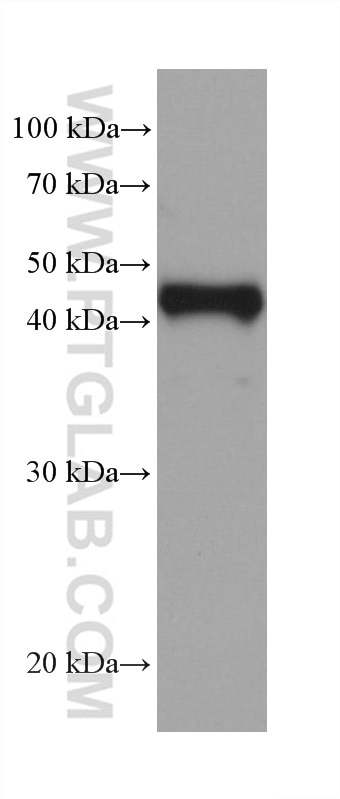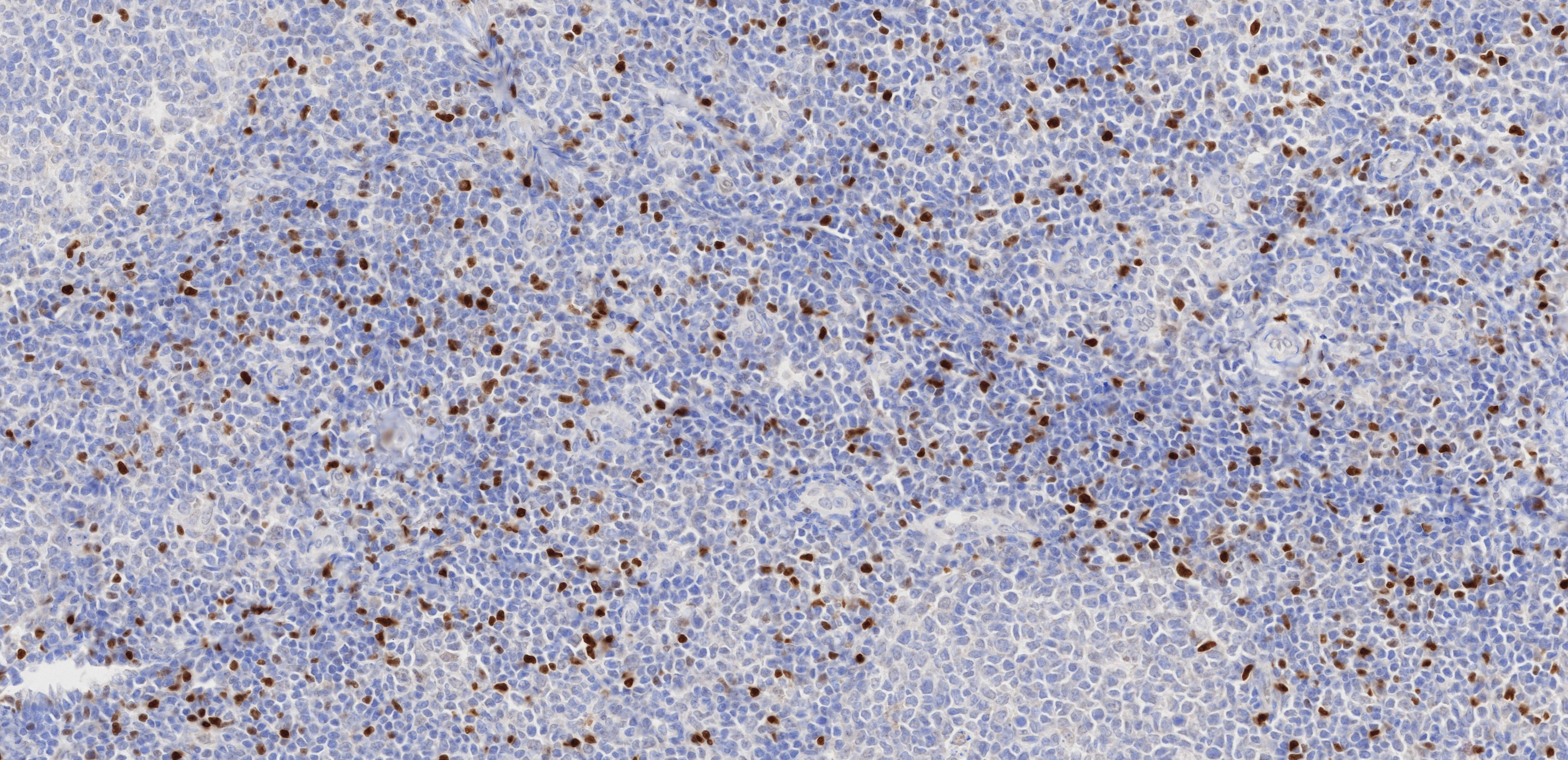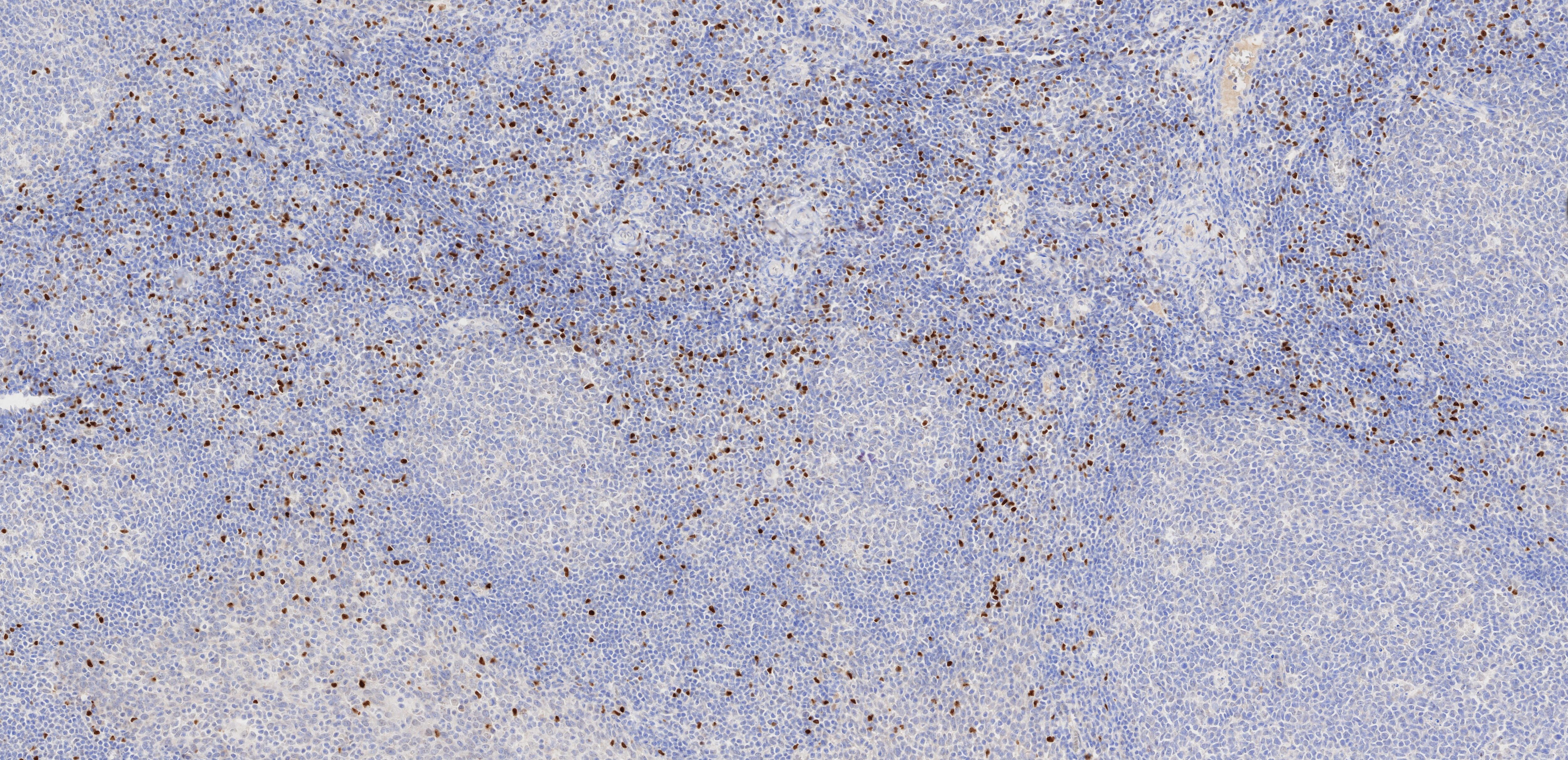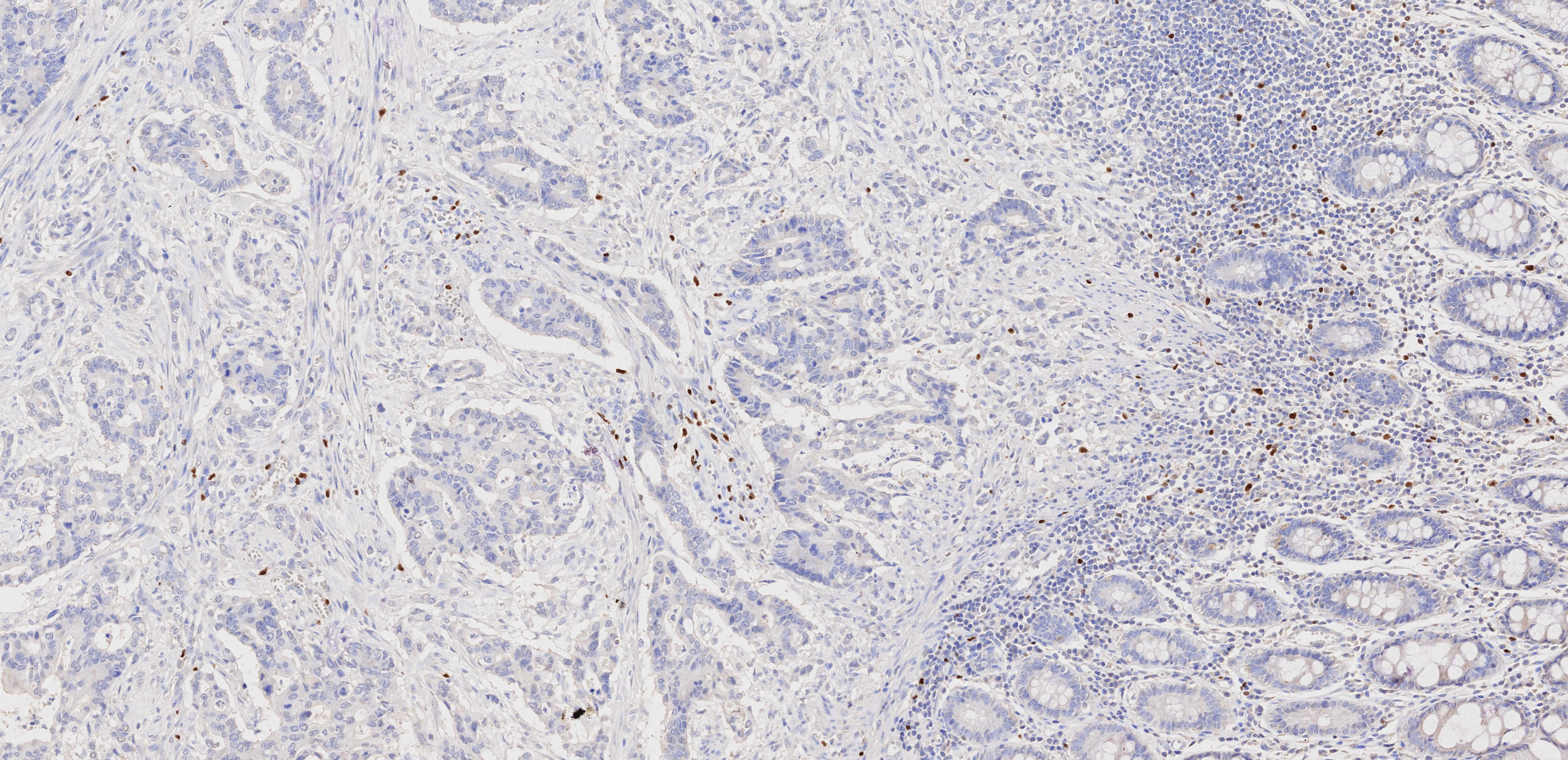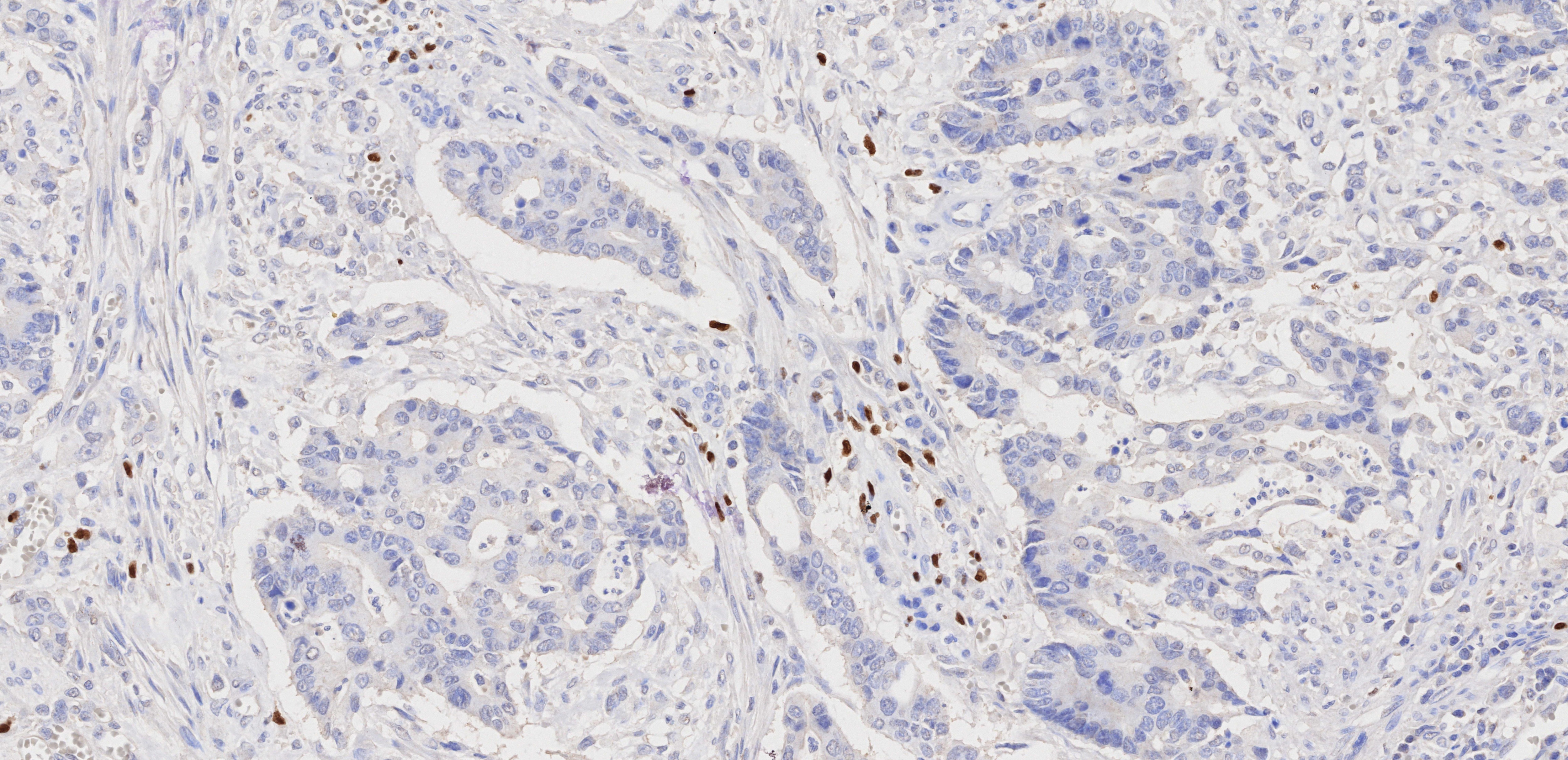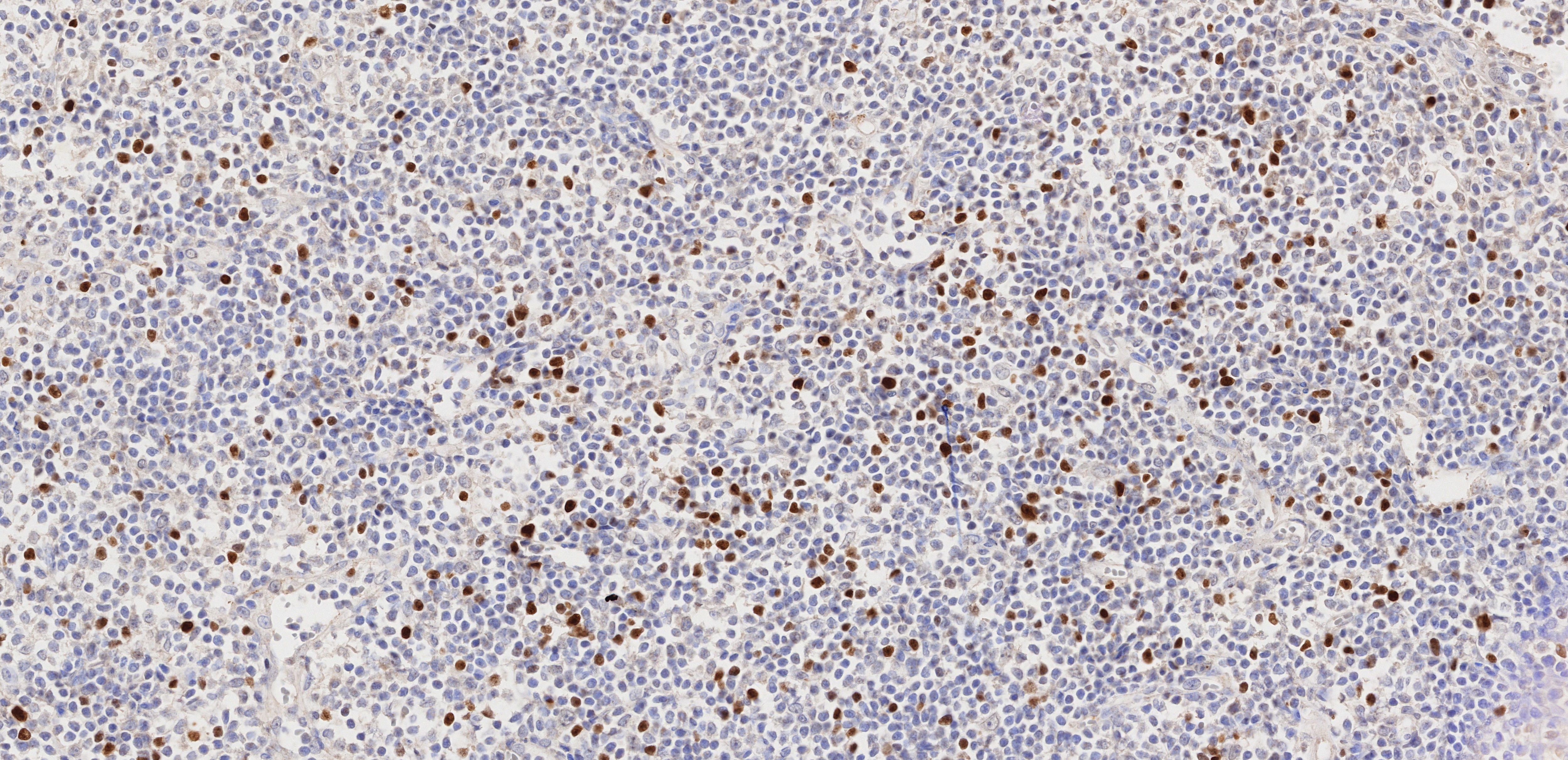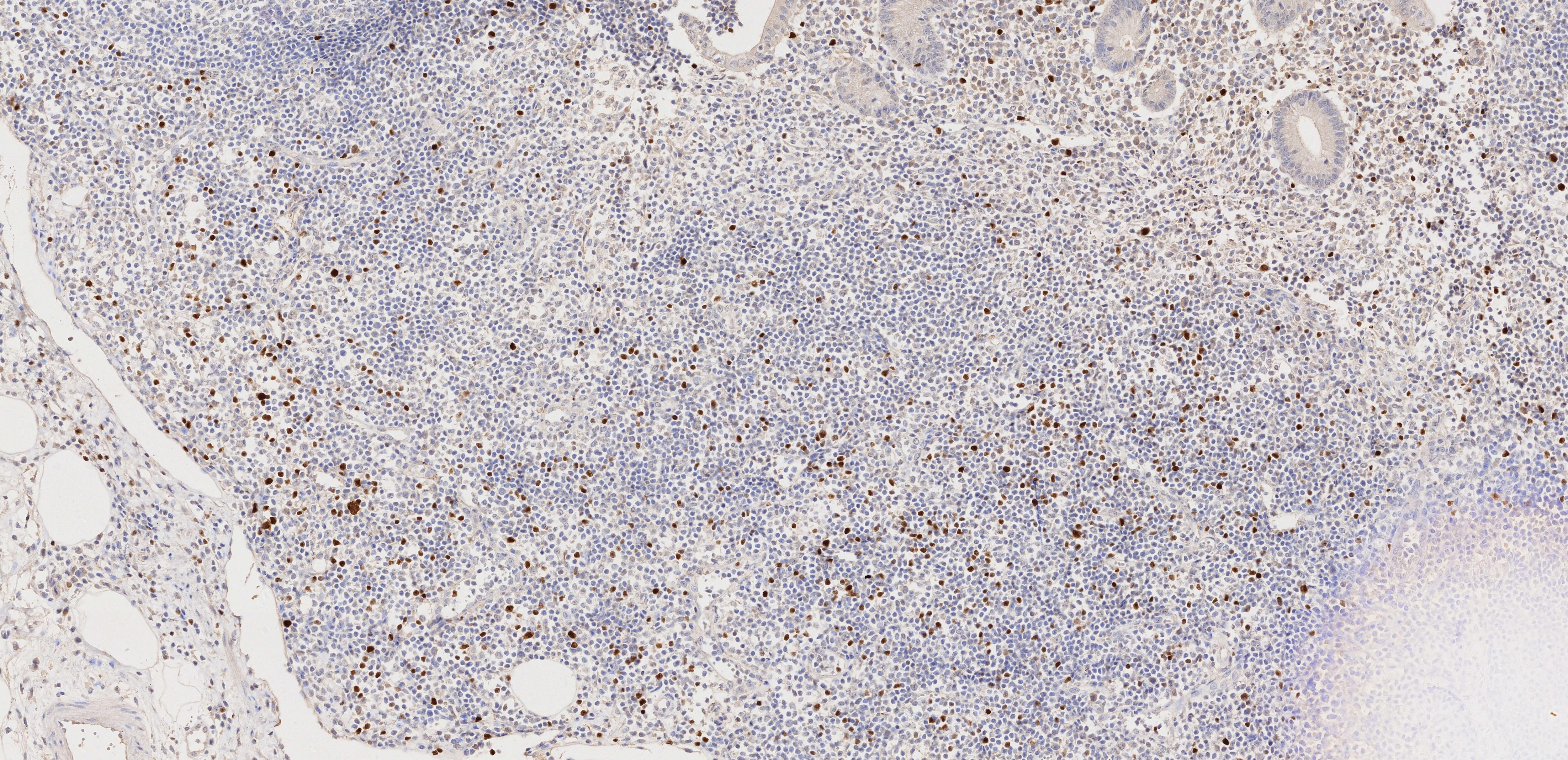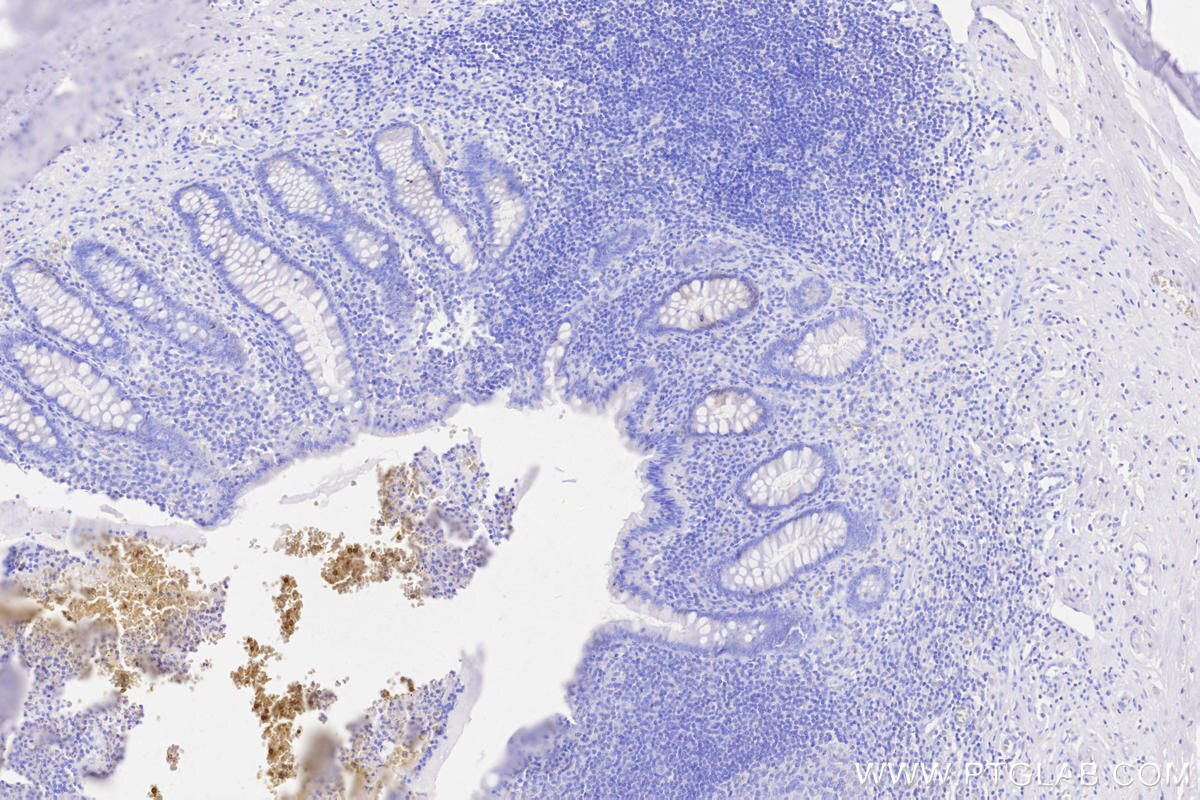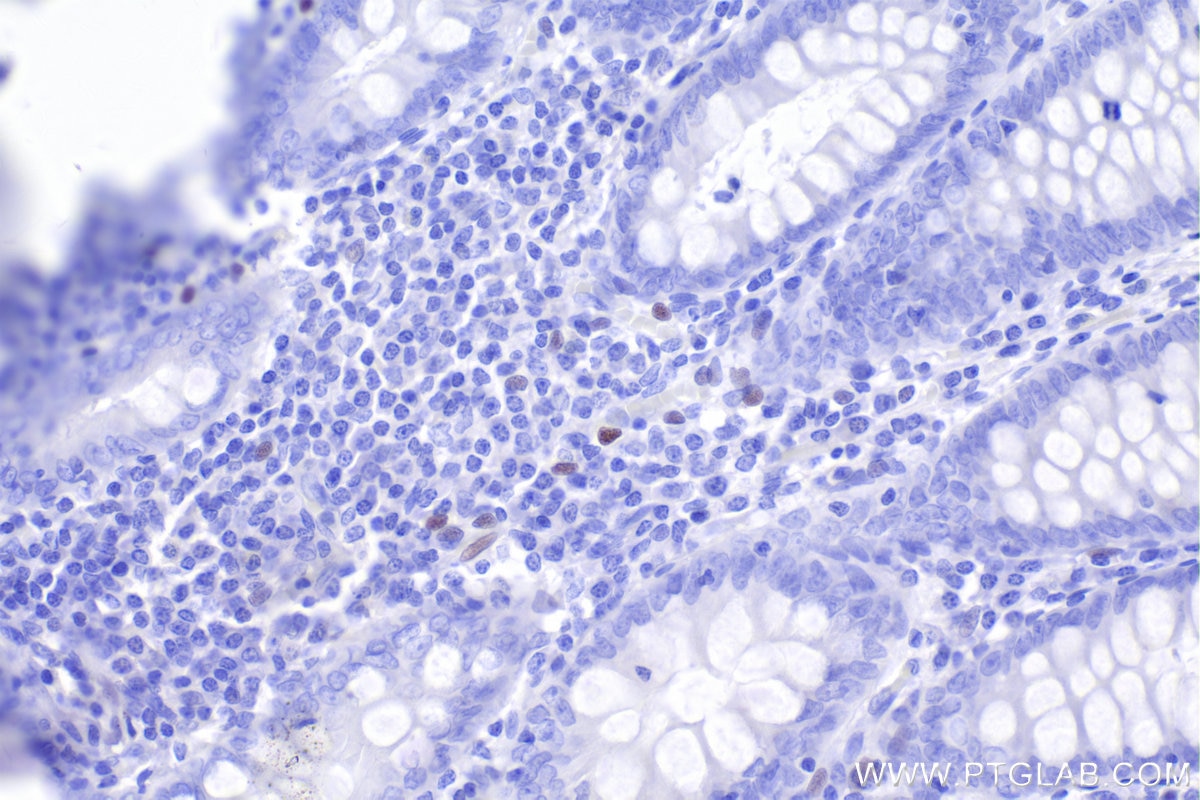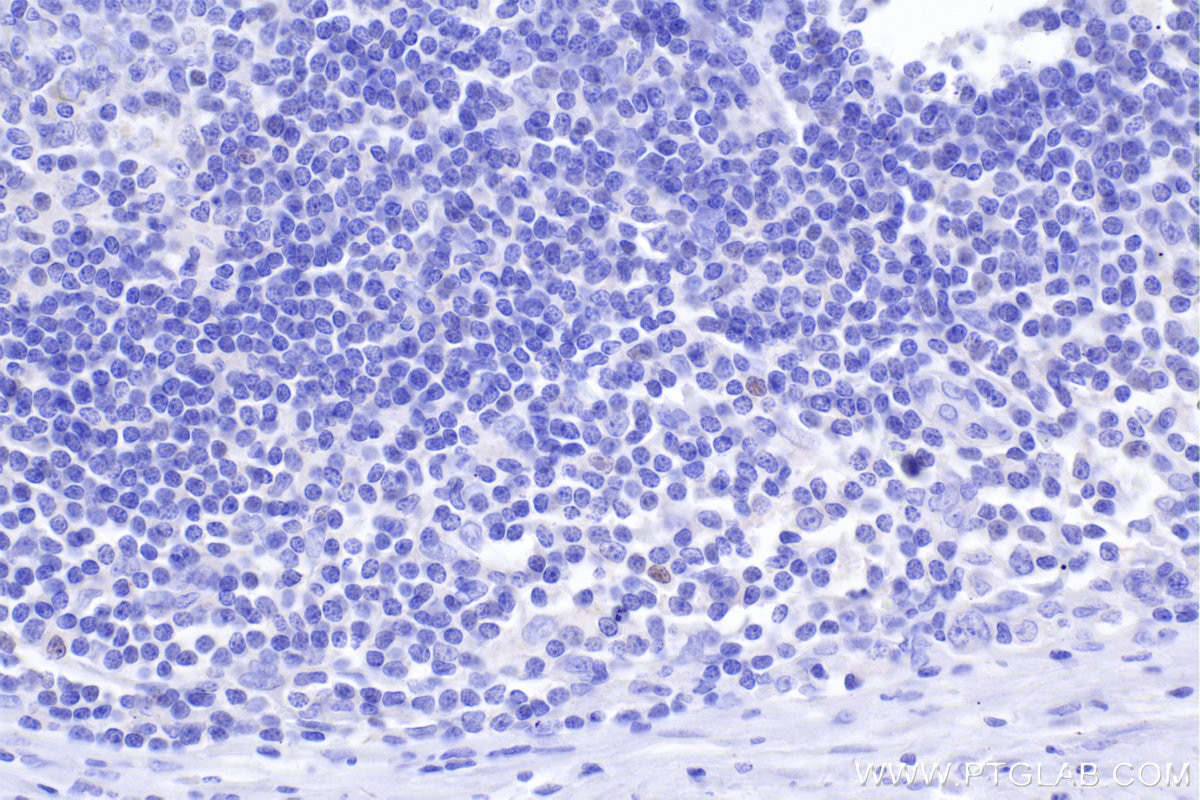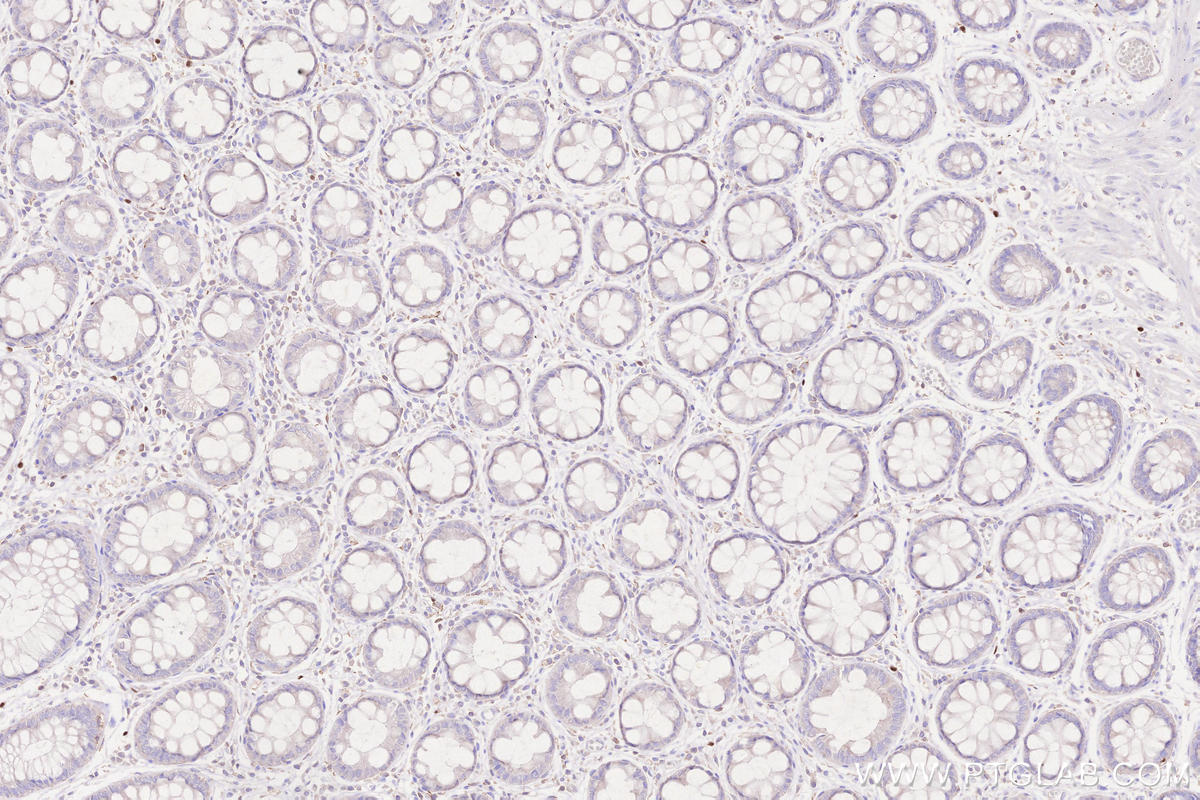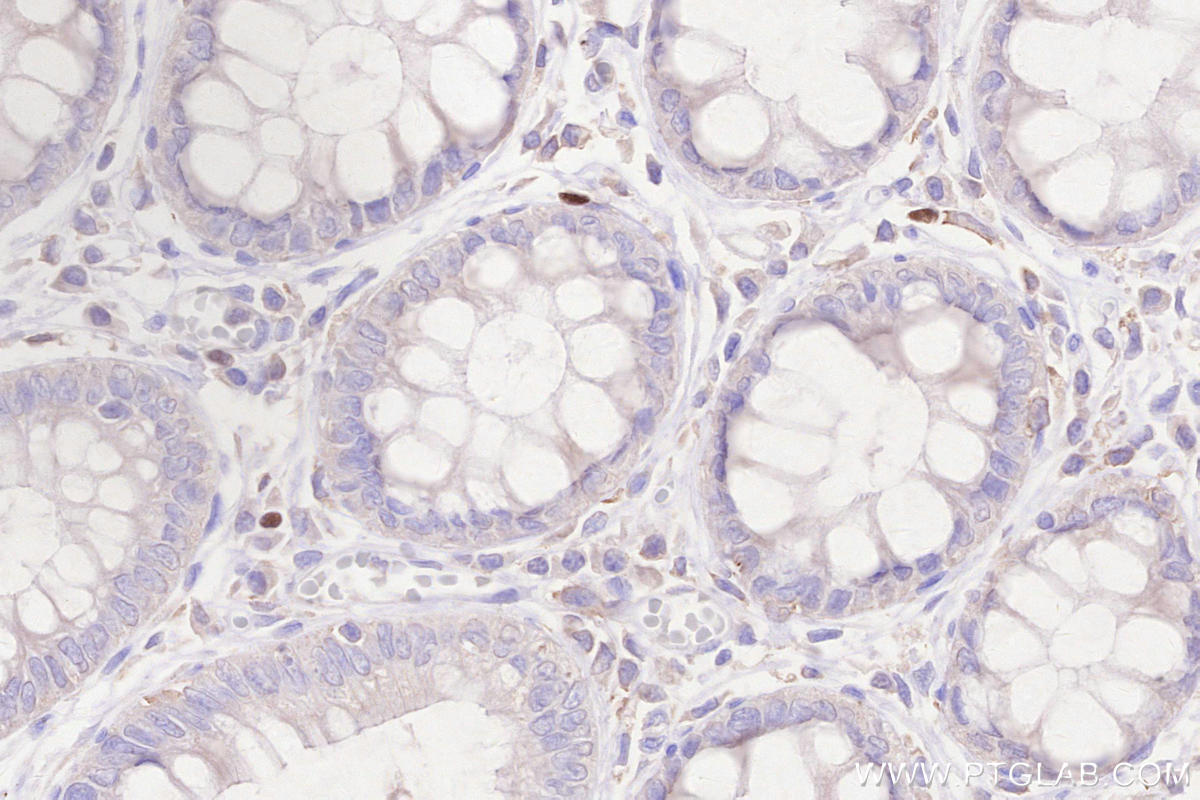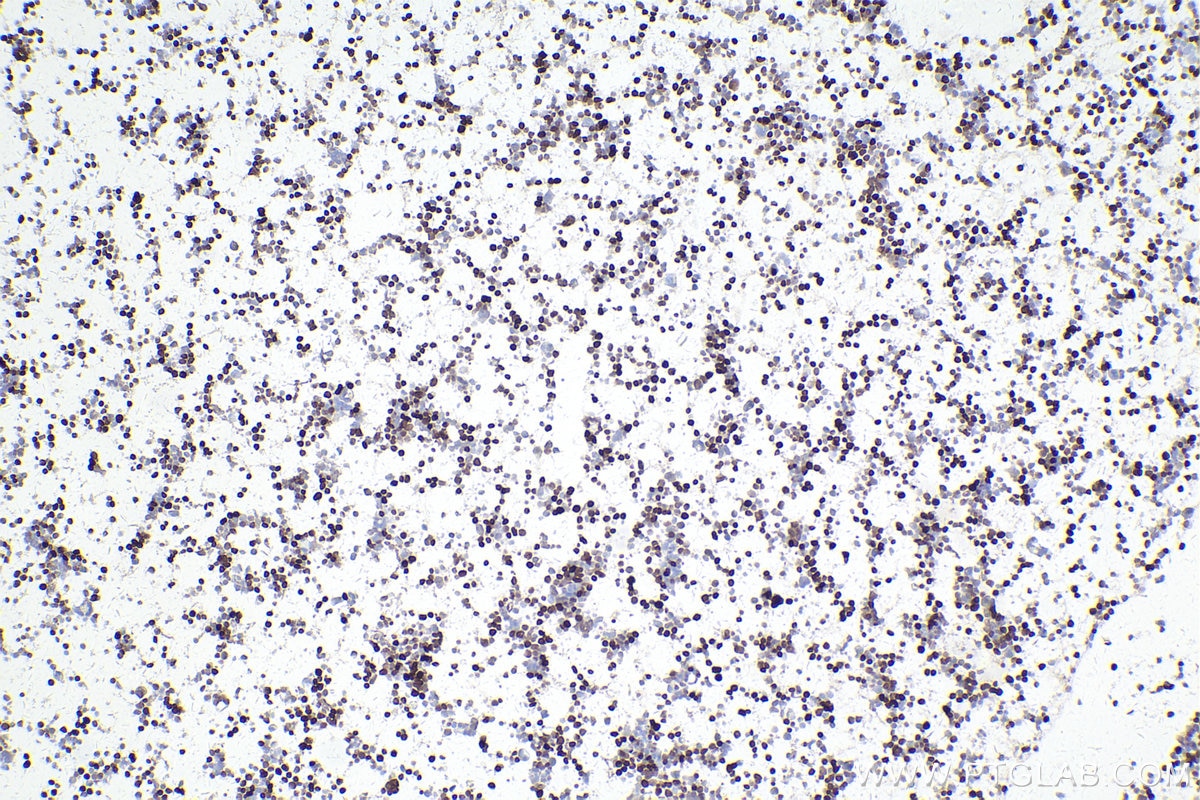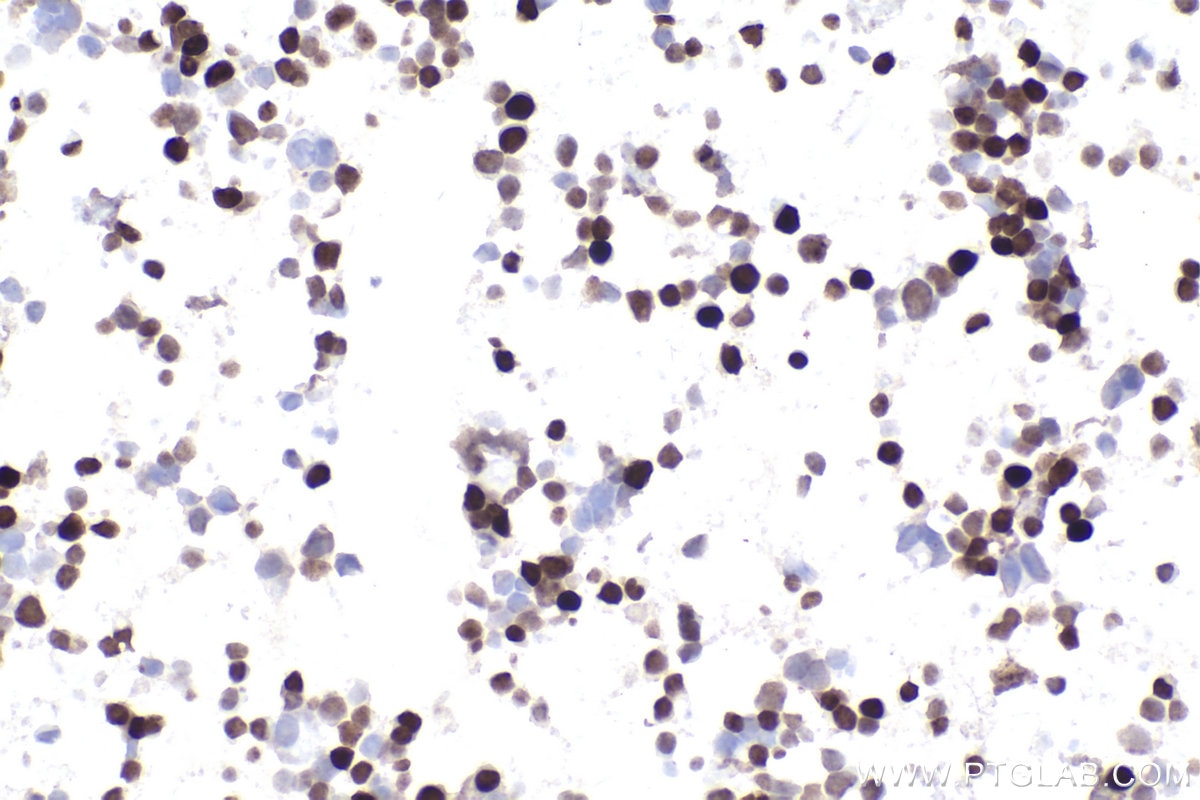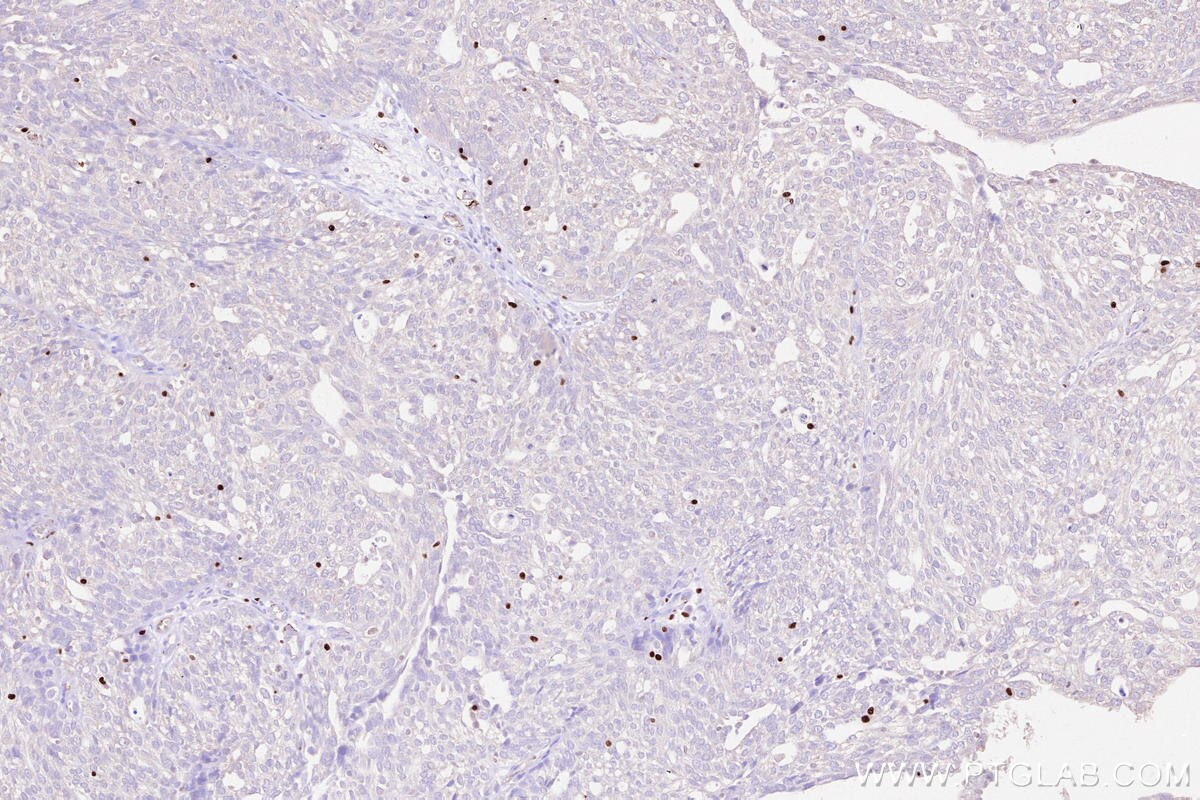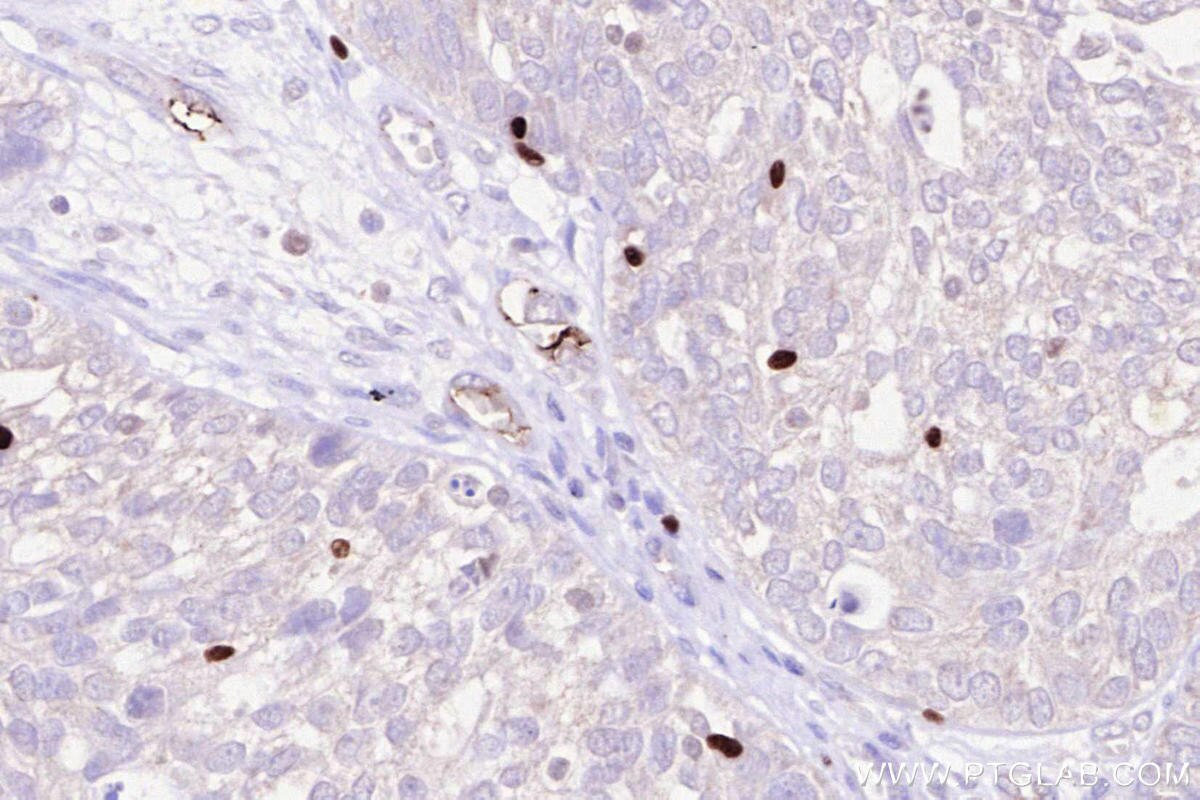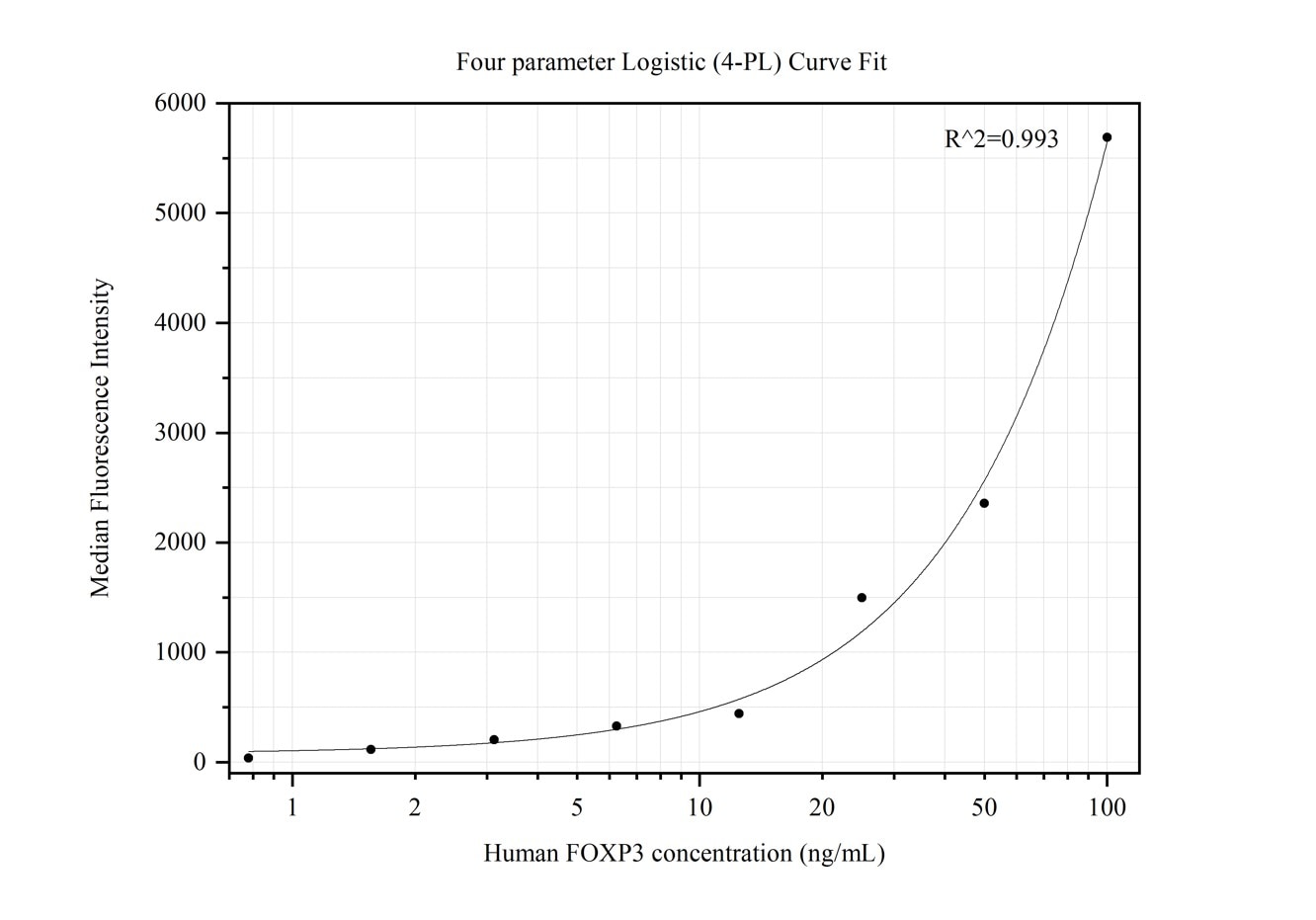IHC Figures
IHC staining of human tonsillitis using 68803-2-Ig (same clone as 68803-2-PBS)
Immunohistochemical analysis of paraffin-embedded human tonsillitis tissue slide using 68803-2-Ig (FOXP3 antibody) at dilution of 1:4000 (under 20x lens). Heat mediated antigen retrieval with Tris-EDTA buffer (pH 9.0). This data was developed using the same antibody clone with 68803-2-PBS in a different storage buffer formulation.
IHC staining of human tonsillitis using 68803-2-Ig (same clone as 68803-2-PBS)
Immunohistochemical analysis of paraffin-embedded human tonsillitis tissue slide using 68803-2-Ig (FOXP3 antibody) at dilution of 1:4000 (under 10x lens). Heat mediated antigen retrieval with Tris-EDTA buffer (pH 9.0). This data was developed using the same antibody clone with 68803-2-PBS in a different storage buffer formulation.
IHC staining of human rectal cancer using 68803-2-Ig (same clone as 68803-2-PBS)
Immunohistochemical analysis of paraffin-embedded human rectal cancer tissue slide using 68803-2-Ig (FOXP3 antibody) at dilution of 1:4000 (under 10x lens). Heat mediated antigen retrieval with Tris-EDTA buffer (pH 9.0). This data was developed using the same antibody clone with 68803-2-PBS in a different storage buffer formulation.
IHC staining of human rectal cancer using 68803-2-Ig (same clone as 68803-2-PBS)
Immunohistochemical analysis of paraffin-embedded human rectal cancer tissue slide using 68803-2-Ig (FOXP3 antibody) at dilution of 1:4000 (under 20x lens). Heat mediated antigen retrieval with Tris-EDTA buffer (pH 9.0). This data was developed using the same antibody clone with 68803-2-PBS in a different storage buffer formulation.
IHC staining of human appendicitis using 68803-2-Ig (same clone as 68803-2-PBS)
Immunohistochemical analysis of paraffin-embedded human appendicitis tissue slide using 68803-2-Ig (FOXP3 antibody) at dilution of 1:4000 (under 20x lens). Heat mediated antigen retrieval with Tris-EDTA buffer (pH 9.0). This data was developed using the same antibody clone with 68803-2-PBS in a different storage buffer formulation.
IHC staining of human appendicitis using 68803-2-Ig (same clone as 68803-2-PBS)
Immunohistochemical analysis of paraffin-embedded human appendicitis tissue slide using 68803-2-Ig (FOXP3 antibody) at dilution of 1:4000 (under 10x lens). Heat mediated antigen retrieval with Tris-EDTA buffer (pH 9.0). This data was developed using the same antibody clone with 68803-2-PBS in a different storage buffer formulation.
IHC staining of human appendicitis using 68803-2-Ig (same clone as 68803-2-PBS)
Immunohistochemical analysis of paraffin-embedded human appendicitis tissue slide using 68803-2-Ig (FOXP3 antibody) at dilution of 1:2000 (under 10x lens). Heat mediated antigen retrieval with Tris-EDTA buffer (pH 9.0). This data was developed using the same antibody clone with 68803-2-PBS in a different storage buffer formulation.
IHC staining of human appendicitis using 68803-2-Ig (same clone as 68803-2-PBS)
Immunohistochemical analysis of paraffin-embedded human appendicitis tissue slide using 68803-2-Ig (FOXP3 antibody) at dilution of 1:2000 (under 40x lens). Heat mediated antigen retrieval with Tris-EDTA buffer (pH 9.0). This data was developed using the same antibody clone with 68803-2-PBS in a different storage buffer formulation.
IHC staining of human lymphoma using 68803-2-Ig (same clone as 68803-2-PBS)
Immunohistochemical analysis of paraffin-embedded human lymphoma tissue slide using 68803-2-Ig (FOXP3 antibody) at dilution of 1:2000 (under 40x lens). Heat mediated antigen retrieval with Tris-EDTA buffer (pH 9.0). This data was developed using the same antibody clone with 68803-2-PBS in a different storage buffer formulation.
IHC staining of human rectal cancer using 68803-2-Ig (same clone as 68803-2-PBS)
Immunohistochemical analysis of paraffin-embedded human rectal cancer tissue slide using 68803-2-Ig (FOXP3 antibody) at dilution of 1:2000 (under 10x lens). Heat mediated antigen retrieval with Tris-EDTA buffer (pH 9.0). This data was developed using the same antibody clone with 68803-2-PBS in a different storage buffer formulation.
IHC staining of human rectal cancer using 68803-2-Ig (same clone as 68803-2-PBS)
Immunohistochemical analysis of paraffin-embedded human rectal cancer tissue slide using 68803-2-Ig (FOXP3 antibody) at dilution of 1:2000 (under 40x lens). Heat mediated antigen retrieval with Tris-EDTA buffer (pH 9.0). This data was developed using the same antibody clone with 68803-2-PBS in a different storage buffer formulation.
IHC staining of MJ using 68803-2-Ig (same clone as 68803-2-PBS)
Immunohistochemical analysis of paraffin-embedded MJ cells slide using 68803-2-Ig (FOXP3 antibody) at dilution of 1:2000 (under 10x lens). Heat mediated antigen retrieval with Tris-EDTA buffer (pH 9.0). This data was developed using the same antibody clone with 68803-2-PBS in a different storage buffer formulation.
IHC staining of MJ using 68803-2-Ig (same clone as 68803-2-PBS)
Immunohistochemical analysis of paraffin-embedded MJ cells slide using 68803-2-Ig (FOXP3 antibody) at dilution of 1:2000 (under 40x lens). Heat mediated antigen retrieval with Tris-EDTA buffer (pH 9.0). This data was developed using the same antibody clone with 68803-2-PBS in a different storage buffer formulation.
IHC staining of human ovary cancer using 68803-2-Ig (same clone as 68803-2-PBS)
Immunohistochemical analysis of paraffin-embedded human ovary cancer tissue slide using 68803-2-Ig (FOXP3 antibody) at dilution of 1:2000 (under 10x lens). Heat mediated antigen retrieval with Tris-EDTA buffer (pH 9.0). This data was developed using the same antibody clone with 68803-2-PBS in a different storage buffer formulation.
IHC staining of human ovary cancer using 68803-2-Ig (same clone as 68803-2-PBS)
Immunohistochemical analysis of paraffin-embedded human ovary cancer tissue slide using 68803-2-Ig (FOXP3 antibody) at dilution of 1:2000 (under 40x lens). Heat mediated antigen retrieval with Tris-EDTA buffer (pH 9.0). This data was developed using the same antibody clone with 68803-2-PBS in a different storage buffer formulation.
CYTOMETRIC BEAD ARRAY Figures
Cytometric bead array standard curve of MP50216-1
Cytometric bead array standard curve of MP50216-1, FOXP3 Monoclonal Matched Antibody Pair, PBS Only. Capture antibody: 68803-2-PBS. Detection antibody: 68838-1-PBS. Standard:Ag17571. Range: 0.781-100 ng/mL.

